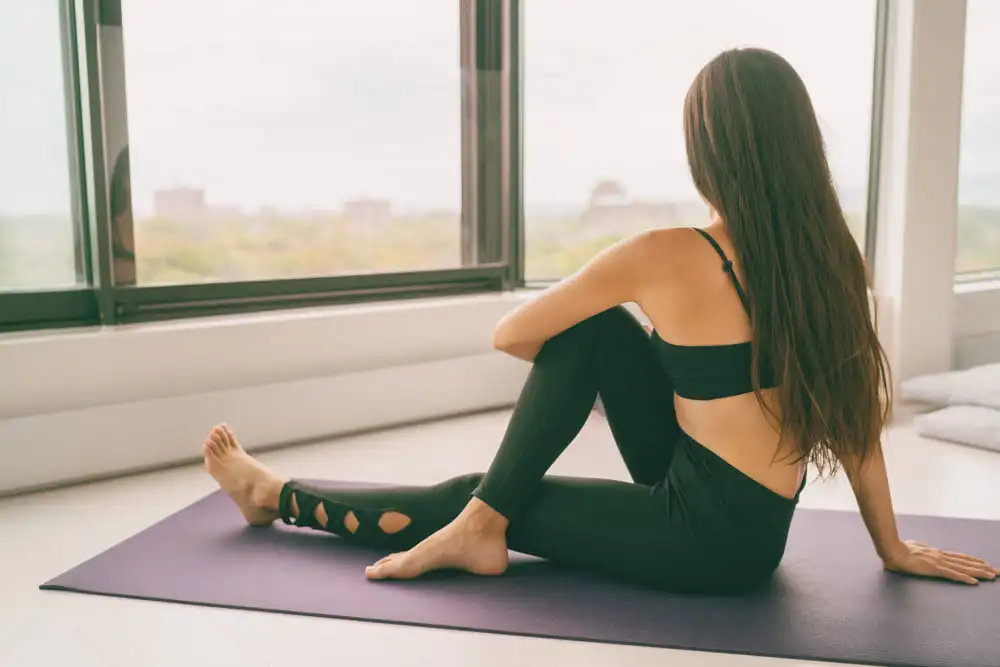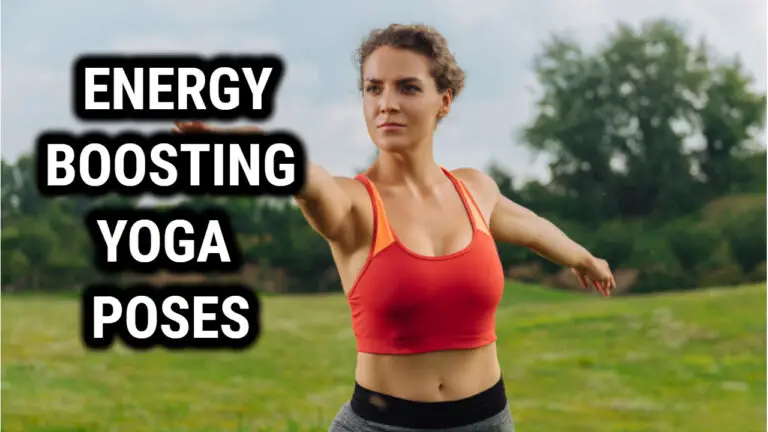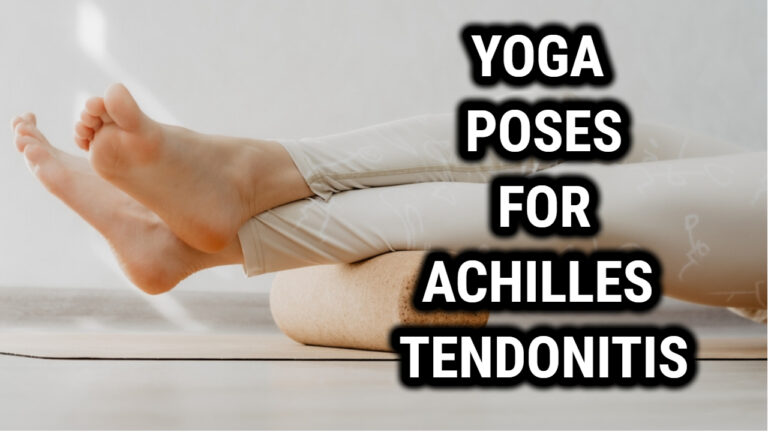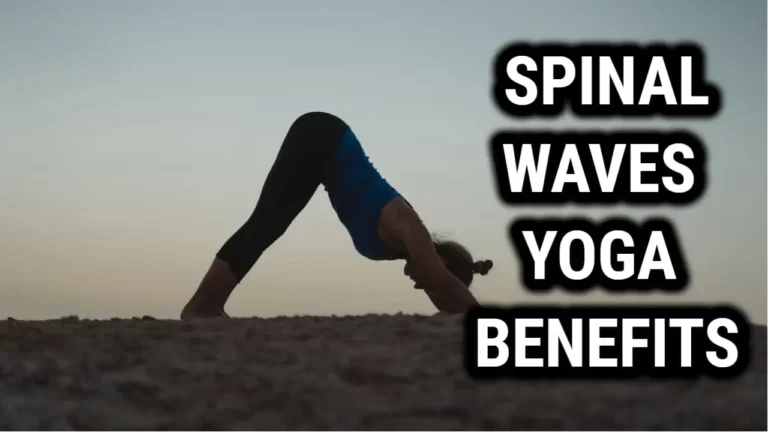Is Yoga Good For Hip Pain – Tips and Techniques for a Pain-Free Life

Do you suffer from hip pain? Are you looking for a natural, non-invasive solution to your discomfort? Yoga might be your answer. The practice of yoga has been used for centuries to reduce stress, increase flexibility and balance, and strengthen the body. But is it effective in relieving hip pain? Lets explore the potential benefits of yoga for hip pain and provide tips for getting started.
Hip pain can be debilitating and have an impact on our daily lives. From walking to sitting down, every movement can become a struggle when we’re dealing with hip issues.
Fortunately, there are many different treatment options available that can help us find relief from our discomfort. One of these treatments is yoga.
Benefits Of Doing Yoga For Hip Pain Relief

Yoga has long been known as an effective way to reduce pain and promote overall health. It can be particularly beneficial for those experiencing hip pain, as many yoga poses target the muscles and joints of the hips to provide relief. Through gentle stretching, yoga can help improve flexibility and mobility in the hips while reducing associated discomfort.
Certain yoga poses are especially helpful for relieving hip pain. These include low-stress postures like bridge pose, reclining hero pose, and child’s pose. These poses allow the body to move with control and intention, helping to encourage relaxation in the hips while also gently stretching tight muscles.
Additionally, poses like warrior I or II can help strengthen weakened muscles around the hips, providing stability for improved movement.
Overall, practicing yoga offers a range of potential benefits for those suffering from hip pain. By targeting weak or tight muscles in the area, it can help reduce inflammation and stiffness while improving flexibility and mobility. With regular practice of these poses, individuals may soon find that their hip pain is more manageable or even eliminated altogether.
Yoga helps Hip Pain and a lot more
1. Improves Posture: Yoga helps to improve your posture, which can reduce the strain on the hips and reduce hip pain.
2. Increases Flexibility: Doing yoga regularly helps to increase flexibility by hip stretches and range of motion in the hip area, which can help to reduce pain from stiff muscles.
3. Strengthens Muscles: Strengthening the muscles that support the hips, such as the glutes and the core, can help to reduce hip pain due to muscle weakness.
4. Improves Balance: Improving your balance can also help to reduce hip pain, as it can help to reduce the strain on the hips when you’re walking or standing.
5. Releases Tension: Doing yoga can help to release tension in the hips, which can help to reduce pain.
Common Causes Of Hip Pain
Hip pain is a common physical ailment that can affect people of all ages. It can be caused by a variety of factors, including injury, overuse, or other medical conditions such as hip arthritis or hip flexor strain. Hip pain can be acute – meaning it comes on suddenly and severely – or chronic – meaning it persists for an extended period of time.
Injuries to the hip are among the most common causes of hip pain. This can include fractures, sprains, strains, and dislocations. Overuse injuries may also cause hip discomfort, with activities like running or cycling placing extra stress on the joints and muscles of the hips.
Finally, medical conditions such as osteoarthritis or bursitis can cause lasting hip pain. These conditions can be caused by age-related wear-and-tear to the joints and muscles in the area, leading to inflammation and stiffness in the tissue around the joint. As such, they require specialized treatment from a doctor in order to bring relief from discomfort.
By understanding the potential causes of hip pain, we can begin to explore how yoga might provide relief from this condition.
Practicing Yoga For Hip Pain
When it comes to reducing hip pain, yoga can be an invaluable tool. Through the thoughtful practice of certain poses, individuals may find that their hips are loosened up and strengthened – allowing for improved mobility and reduced discomfort.
From bridge pose to warrior I or II, there are a number of yoga poses that can help alleviate hip pain.
Practicing these poses regularly can be incredibly beneficial for those suffering from hip pain due to arthritis, bursitis, tendinitis, or other types of injuries. By gently stretching and strengthening weakened muscles in the area, individuals may find that their range of motion is increased while their discomfort is reduced.
Yoga postures can help improve balance and posture while encouraging relaxation in the hips – all of which can lead to an overall reduction in symptoms.
Thus, it is clear that when done correctly and consistently, yoga poses can provide a powerful form of relief for those dealing with hip pain. Whether one is looking to reduce inflammation or restore strength in the area, incorporating some basic yoga postures into one’s daily routine may be just what they need.
Yoga Poses To Avoid With Hip Pain

When it comes to managing hip pain, certain yoga poses can be incredibly beneficial – while others may potentially worsen the symptoms. For those dealing with hip impingement, for example, there are some poses that should be avoided in order to reduce inflammation and avoid further injury. Here are a few of the most important poses to avoid when dealing with hip pain:
• Seated twist: Twisting poses can put too much strain on the hips and should therefore be avoided by those dealing with any type of hip pain.
• Camel pose: This deep backbend requires flexibility that may not always be possible for those who suffer from hip pain; thus, it is best to avoid this pose.
• Side-lying poses: Any posture that requires lying on one side, such as revolved side angle or half moon pose, should also be avoided as they can cause further discomfort to the hips.
• Pigeon pose: This popular posture can be especially difficult for individuals with tight hips; thus, it is best to opt for gentler stretching postures instead.
By understanding which postures should not be practiced when dealing with hip pain, individuals can more confidently engage in beneficial yoga poses without fear of exacerbating their symptoms.
Understanding Your Hip Flexor Muscles
When it comes to hip pain, having an understanding of the hip flexor muscles can be incredibly helpful when attempting to reduce symptoms. By learning more about these important muscles, individuals can make sure they are focusing on strengthening, stretching, and releasing tension in the right places.
The hip flexors are a group of small muscles that connect the pelvis to the femur, allowing us to move our hips forward and backward. These muscles include the psoas major, iliacus, pectineus, sartorius, rectus femoris, and tensor fascia latae ligament – all of which play an important role in maintaining proper posture and alignment in various yoga poses.
Tightness in these muscles can be caused by overuse or injury; thus, it is important to understand how to properly stretch and strengthen them in order to reduce discomfort.
By incorporating specific stretches into one’s yoga practice that target each of these individual hip flexor muscles – such as child’s pose or half-kneeling hip flexor stretch – individuals can begin to loosen and stabilize any tightness that may be contributing to their pain.
Additionally, strengthening exercises such as bridges or single- left leg or right leg lifts can help improve overall stability and mobility while reducing pain associated with hip impingement or other issues related to weak hip flexors.
Individuals can work towards restoring balance and ease throughout their entire body so they can continue doing what they love without worrying about further injury or strain.
Tips On How To Loosen Tight Hips

As we have seen, understanding the hip flexor muscles and how to properly stretch and strengthen them can be of great benefit when dealing with hip pain. But how can yoga specifically help loosen tight hips? Here are a few tips that may be helpful in reversing tightness and discomfort associated with hip issues:
- Incorporate more dynamic stretches into your practice. Dynamic stretching involves moving through a range of motion while actively engaging the muscles; this type of stretching has been shown to improve flexibility better than static stretching alone. Try adding some low-impact lunge variations or gentle twists to help loosen up any tightness before going deeper into longer holds.
- Focus on proper alignment during poses. While it may seem counterintuitive, attempting to push your body past its limits can actually cause more harm than good when it comes to hip health. Make sure you are paying attention to your body’s signals, and if something feels uncomfortable or too intense, back off until you find a comfortable position where you can still feel the stretch without overdoing it.
- Use props for support in standing poses. Props such as blocks or straps are incredibly useful tools for supporting your body in certain poses; use them whenever possible! For example, having a block under each hand while doing triangle pose can help keep your spine aligned while allowing you to access a deeper stretch in the hips and legs – just make sure not to push yourself too far beyond what is comfortable for you.
These simple tips can go a long way towards helping individuals reverse any tightness or discomfort they may be feeling in their hips so they can continue practicing yoga without fear of further injury or strain.
With these strategies in mind, individuals can feel empowered to make informed decisions about how best to approach their practice when dealing with hip pain.
Preparing For A Yoga Class With Hip Issues
When practicing yoga with hip injuries or issues, it is important to be aware of which poses may cause strain and discomfort. Avoid deep squats, wide forward folds, and any poses involving external rotation.
Instead, focus on gentler poses that provide gentle stretching and support for the hips, such as standing half moon pose with a block for support, supine twist variations with bent knees, low lunge variations with a block or bolster, bridge pose, and supported pigeon pose.
By paying attention to how your body feels throughout, you can ensure that your practice is both safe and beneficial.
Natural Remedies That Can Help With Chronic Hip Pain
Soothing achy hips and managing chronic hip pain can often be challenging, but there are many natural remedies that can help. From yoga to simple stretches, there are plenty of options available for anyone looking to ease their hip discomfort.
Whether your goal is to increase flexibility or reduce pain, these three strategies can help you find relief from your hip pain and get back to living life more comfortably.
First, incorporating yoga into your daily routine can be an effective way to improve the strength and flexibility of your hips.
Certain poses, such as bridge pose and low lunge variations with a block or bolster under the raised knee, can provide gentle stretching while also strengthening the muscles in the area. Practicing yoga regularly may even help reduce the symptoms of chronic hip pain over time.
Second, stretching is another key component in relieving tightness in the hips. Taking time each day to focus on lengthening and releasing tension in these areas can help improve overall mobility while reducing discomfort. Simple stretches like figure fours, seated twists, and reclined crossovers are all good options for those looking to ease their achy hips.
Finally, foam rolling or self-myofascial release has been known to be highly beneficial for individuals suffering from chronic hip pain. This technique helps release tightness within the muscles around the hips by applying pressure with soft tissue tools like a foam roller or massage ball.
Working on this area regularly can not only provide immediate relief but also improve mobility long term by breaking down adhesions that have built up over time from repetitive motion injuries or incorrect posture practices.
By taking advantage of these natural remedies and making them part of your everyday routine, you may find yourself feeling better in no time at all!
With consistency and dedication to finding relief through these methods, you too can begin seeing results when it comes to easing your hip pain and improving flexibility in this important area of the body.
Also Read: Stretching Yoga Poses: Improve Flexibility and Reduce Muscle Tension
Frequently Asked Questions
What Are The Most Effective Yoga Poses For Hip Pain Relief?
The key to relieving hip pain through yoga is to focus on stretching the hips and strengthening the muscles in the area. Different poses target different parts of the hips, so it’s important to find the right combination of exercises for your individual needs.
Cat-Cow Pose is great for warming up, while Half Pigeon Pose provides an intense stretch that helps to release tension in the hips.
Reclined Bound Angle pose helps open up the inner thighs and lower back areas, while Supine Hand-To-Big-Toe pose strengthens the gluteal muscles and brings flexibility to the hip joint itself.
These poses should be done slowly and mindfully; if pain arises during any posture, gently come out of it until you get used to it. It’s also important to keep your breath steady throughout each movement, as this will help you stay present in each pose and maximize its benefits.
With regular practice over time, these yoga postures can dramatically improve hip pain symptoms by loosening tight muscles around your joints and restoring mobility to your hips.
Are There Any Special Precautions I Should Take When Practicing Yoga For Hip Pain?
When practicing yoga for hip pain, it’s important to make sure you are taking the appropriate measures for safety, such as listening to your body and modifying poses as necessary. Props like blocks, straps, and bolsters can give added support and make poses more comfortable.
Additionally, keep communication open with your instructor so they are aware of any limitations. With these precautions, yoga can be an effective way to reduce hip pain and restore mobility.
Are There Any Dietary Changes I Should Make To Help With Hip Pain?
To help ease hip pain, limit foods high in saturated and trans fats, sugary drinks, and processed foods. Eat more fruits and vegetables, whole grains, and fish – all of which contain antioxidants, vitamins, minerals, fiber, and B vitamins that support joint health and omega-3 fatty acids with anti-inflammatory properties. Making these nutritious dietary changes can help manage hip pain more effectively.
Is There Any Equipment I Need To Practice Yoga For Hip Pain?
Yoga for hip pain does not require any special equipment. Basic accessories such as a mat or blocks are optional. Focusing on form and alignment are key for getting the most out of the practice and relieving hip pain. Expensive equipment is unnecessary for yoga for hip pain.
Can Yoga Help With Other Types Of Pain, Not Just Hip Pain?
A common question is if it can help with pain relief beyond just hip pain – and the answer is a resounding yes! Yoga helps with back and neck pain, shoulder and arm discomfort, headaches, digestive issues, and even menstrual cramps – all due to improved posture and increased flexibility.
But yoga isn’t just about physical pain; it can reduce mental stress as well. By setting aside time each day, you can relax your mind and strengthen your body, bringing balance to your life. This can make it easier to cope with any kind of pain you may be feeling.
Related Read: Prone Yoga Poses: Strengthen Your Back and Core Muscles
Conclusion
Yoga is an effective tool for managing hip pain. It can help reduce pain and stiffness in the hips, as well as provide relief from other pains and aches. Yoga can also be applied to other types of pain, not just hip pain – so if you’re struggling with chronic discomfort, give yoga a try!
Practicing yoga for hip pain can be intimidating at first – but don’t let that stop you from experiencing its many benefits. As long as you follow the necessary precautions and use proper equipment, there’s no reason why you can’t reap all the rewards that come with incorporating yoga into your routine.
Think of it this way: if you’re willing to invest a little time and energy now, you’ll be rewarded with improved health and better quality of life down the road.
Committing to a regular practice of yoga specifically tailored towards relieving hip pain, you’ll be taking steps towards living a healthier lifestyle today and tomorrow





